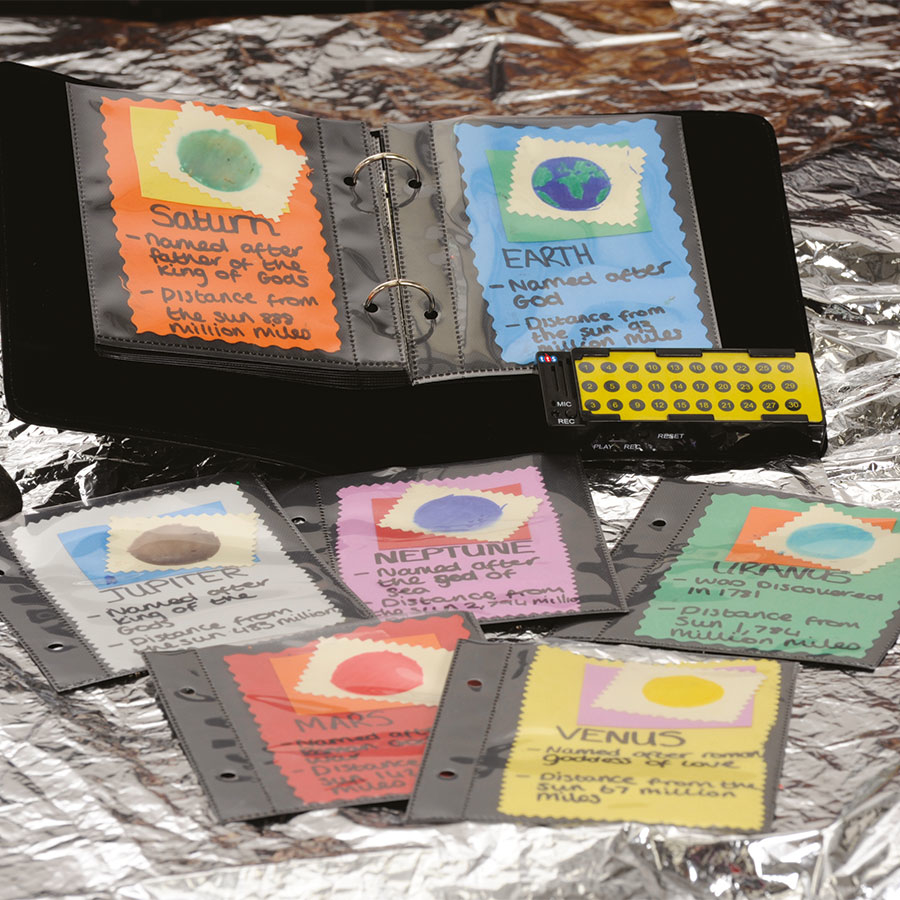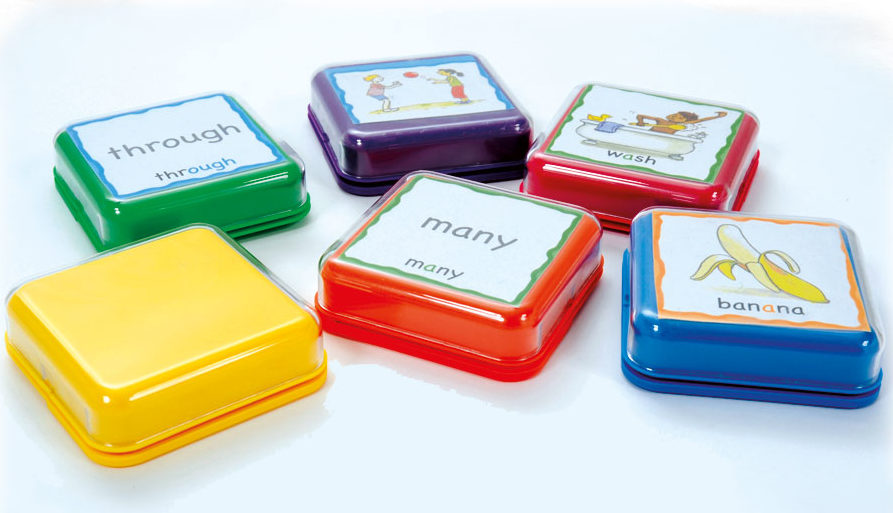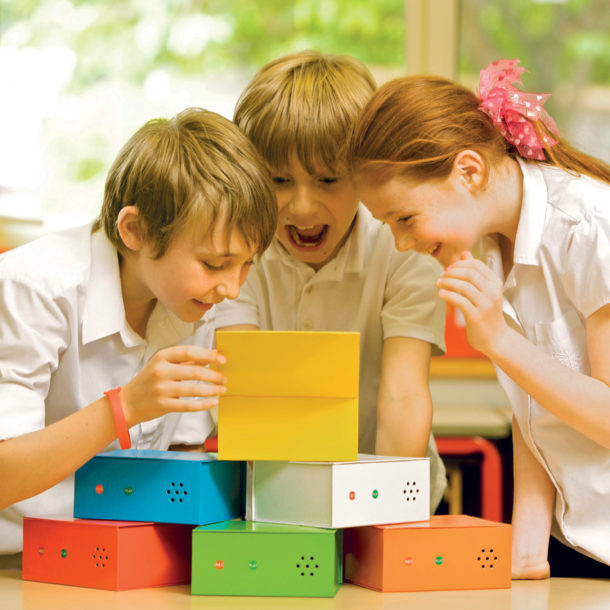I conducted a VAK survey amongst special needs students who I suspected would be visual learners. I was surprised to find the majority had a predominant learning style of auditory. I was intrigued by current research which suggests combining physical and virtual devices can enhance concentration and learning. The obvious solution was to reach for the computer but this posed difficulties in website filtering and access to physical resources let alone expense.
Here are some innovative tools and ideas for literacy and writing development which have the advantage of being amazingly cost effective, reusable and well suited to KS1 and KS2, allowing for great student interaction:
Buttons for recording student book reviews, recordings of authors talking about their own books, reading very short stories, students reading their own creative writing, adding audio to a display.
Talking-Point Recordable Buttons record and playback up to 10 seconds of sound! The tiny speakers on these recordable buttons pack a powerful punch. With every press, your chosen sound or message will play back loud and clear. Replaceable batteries are included. You can create talking displays; help children get their thoughts down quickly; take messages; or create ‘follow me’ games.
Talking photo albums for student book reviews, story creation by students, for making quizzes (place several pictures on one page and give each an assigned audio explanation but only one is the correct answer).

Talking boxes for raising interest in a book or as the starting point for creative writing. (Items are placed inside the box and students guess the title or you can use the items to prompt their own story components)
Story sequencer to illustrate a stepwise approach to story writing or for general non-fiction composition. By changing the order you can show how meaning can also be altered.
Talking tablets, of all sizes, to combine writing and speaking – so useful for ESL students learning vocabulary and grammar. These tablets demonstrate how the two processes are linked. By placing a picture or writing on the tablet and inserting headphones they can also be used for walking around a display giving more information or playing background music.
The possibilities for use are infinite and they can be reused again and again but best of all they give students and especially those struggling with reading and writing a new way to unleash their creativity that enhances their self-esteem.
Sarah Pavey MSc FCLIP Trainer and Consultant //www.sp4il.co.uk @Sarahinthelib















